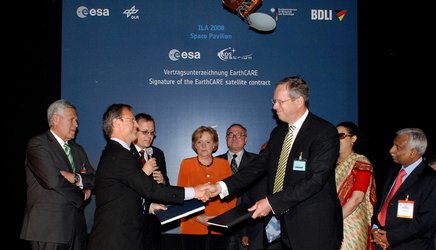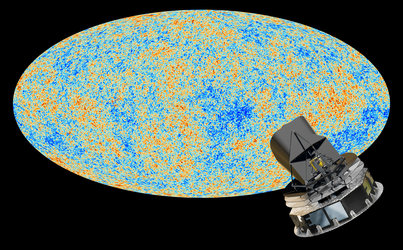European conference addresses increasing demand for EO data
For more than 40 years, Earth observing satellites have delivered valuable data about our planet and have enabled a better understanding and improved management of the Earth and its environment. Demands for these data are increasing daily as decision-makers are faced with responding to environmental change, managing sustainable development and responding to natural disasters and civil security issues.
In order to address these needs, ESA, the German Space Agency (DLR) and the German Aerospace Industries Association (BDLI) have jointly organised a conference aimed at identifying the challenges ahead and exploring specific needs for the future.
European experts from ESA and DLR are attending the conference being held on 27 and 28 May on the occasion of the ILA Berlin Air Show in Germany to provide an overview of existing Earth observation (EO) applications in the area of climate, environmental management and the civil security sector.

Representatives from public authorities, private companies and international organisations are attending the conference entitled ‘Earth observation: Solutions for Decision Making’ to explore specific demands for EO products.
Speaking at the conference, Dr Volker Liebig, ESA’s Director of Earth Observation, outlined ESA’s vigorous EO programmes, which include launching 17 satellites over the next seven years.
These include the family of Earth Explorers that will measure key Earth system processes to understand their role in climate change and the Sentinels that will provide operational information services for global monitoring of the environment and security.
ESA’s Head of Science, Applications and Future Technologies Department Dr Stephen Briggs introduced ESA’s Climate Change Initiative, a new Programme Proposal that will be presented to the ESA Ministerial Council in November 2008.
The objectives of the programme will focus on the delivery of satellite-based ‘Essential Climate Variables’ to support climate change modelling and prediction.

"Satellite data are critical in providing the basic information for modelling and predicting climate change," Briggs said. "The new initiative will ensure that ESA’s potential in this area is fully realised."
The fleet of ESA’s EO satellites has gathered enormous amounts of data relevant for providing this information. Archived over 30 years and increasing daily, these data will form the basis for extracting the variables most relevant to climate change.
ESA and its member states will process the information in a form readily usable by the scientific community and governmental bodies in order to achieve their policies and to support the Intergovernmental Panel on Climate Change (IPCC) and United Nations’ conventions.















 Germany
Germany
 Austria
Austria
 Belgium
Belgium
 Denmark
Denmark
 Spain
Spain
 Estonia
Estonia
 Finland
Finland
 France
France
 Greece
Greece
 Hungary
Hungary
 Ireland
Ireland
 Italy
Italy
 Luxembourg
Luxembourg
 Norway
Norway
 The Netherlands
The Netherlands
 Poland
Poland
 Portugal
Portugal
 Czechia
Czechia
 Romania
Romania
 United Kingdom
United Kingdom
 Slovenia
Slovenia
 Sweden
Sweden
 Switzerland
Switzerland
































